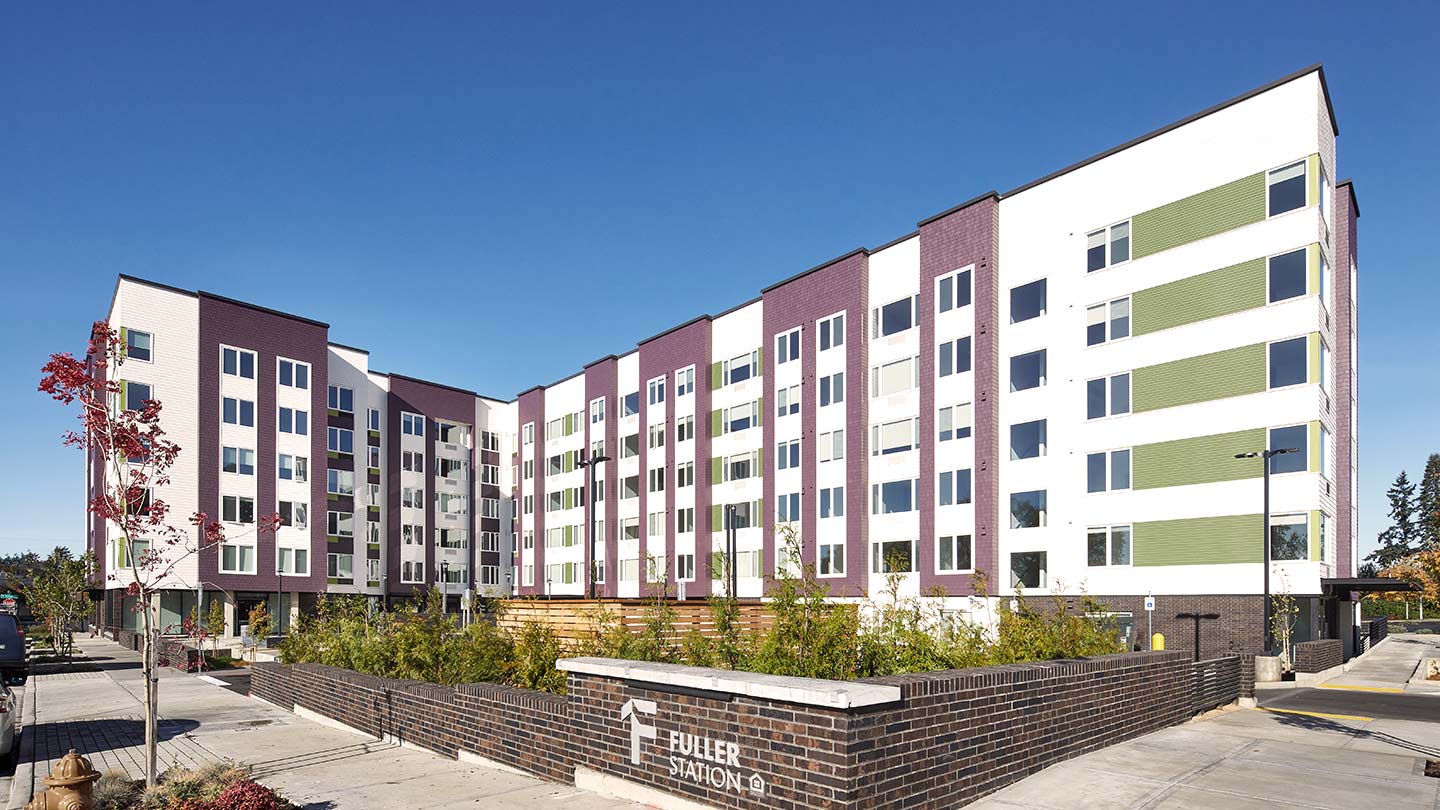
7 min read
Key takeaways
- Economic uncertainty, tariffs, trade policies and other factors could influence commercial real estate in the second half of 2025.
- Multifamily performance is strong, retail remains resilient and industrial has started to normalize.
- Investment opportunities include workforce housing development and office bargains.
A lot has changed for commercial real estate since the beginning of the year. One thing remains the same: economic uncertainty.
“By some measures, there’s more uncertainty today than at any point in the last three to four decades,” said Victor Calanog, global head of research and strategy, Real Estate Private Markets at Manulife Investment Management.
“The greatest challenges today are the unknowns, whether they be economically or legislatively driven,” said Kurt Stuart, co-head of Commercial Term Lending at Chase. “Those unknowns inject more conservatism, resulting in a wait-and-see mentality, ultimately stalling decision-making.”
“Q1 numbers for income drivers, like rents and vacancies, and capital markets metrics, like cap rates and transaction volumes, held steady,” Calanog said. “There’s hope that 2025 represents slightly better growth than 2024, but the risk that economic activity will be depressed has increased.”
Macroeconomic trends
Since taking office in January, President Trump has focused on several economic areas. While the administration hasn’t made notable changes on tax cuts and deregulations, other policies have significantly impacted the macroeconomic environment, including:
- Tariffs and trade: The administration has enacted tariffs on specific countries and commodities. Lumber, steel and other construction materials face higher tariffs, which could continue to slow construction. There’s a bigger issue, though. “Tariffs have a negative impact on input costs, and uncertainty around what those input costs will be means equity capital becomes more scarce and expensive,” Stuart said. “Ultimately, that means fewer properties get built.” These costs could be passed to consumers through higher prices, potentially increasing inflation and prompting the Federal Reserve to keep interest rates steady—or even raise them.
- Immigration: “While tariffs on construction materials will affect commercial real estate, the big issue is labor,” said Al Brooks, vice chair of Commercial Real Estate at J.P. Morgan. The administration has made strict enforcement of immigration law and mass deportations a top priority. As a result, the labor pool could shrink in many markets. With fewer construction workers available, especially in major metropolitan areas, commercial real estate could see higher labor costs and longer building timelines.
- Federal funding: “Current federal budget discussions have added uncertainty in terms of deal feasibility, especially for affordable housing and the financial health of community development players,” said Cécile Chalifour, head of Community Development Real Estate, West Region, at J.P. Morgan. There is clarity for some housing initiatives. Recent legislation made opportunity zone incentives and Low-Income Housing Tax Credit (LIHTC) expansions permanent. “The LIHTC expansions alone could help fund millions of affordable homes in communities across the U.S,” said Vince Toye, head of Community Development Banking and Agency Lending at J.P. Morgan. The New Markets Tax Credit (NMTC) program will also be permanent. “Renewing the NMTC program ensures this vital resource will continue to stimulate investment and economic growth in low- to moderate-income communities, both urban and rural,” said Kevin Goldsmith, head of Tax Credit and Intermediaries at J.P. Morgan.
Challenges facing commercial real estate
Outside the macroeconomic landscape, commercial real estate faces several challenges, including:
- Fraud: According to the 2025 AFP® Payments Fraud and Control Survey Report, 79% of organizations reported being victims of actual or attempted payments fraud activity in 2024. Commercial real estate owners and operators can be particularly susceptible to check fraud and rent payment fraud. Make sure to train—and test—your team on the best ways to spot and prevent cyberattacks and fraud.
- Return-to-office initiatives and layoffs: The Department of Government Efficiency not only cut thousands of jobs, but also broke hundreds of office leases. With federal workers and offices across the country, the geographic impact could be wide ranging. However, the Washington, D.C., area will likely see the greatest impact. While return-to-office mandates could fill up offices and help boost ancillary businesses, they’re unlikely to increase demand. Most companies are aiming to better use their existing office space. Plus, the remaining government lease terminations could increase office supply.
- Natural disasters and rising insurance costs: “January’s wildfires are the largest natural disaster ever striking Los Angeles, and they put the spotlight on the housing and affordability crises,” Chalifour said. The wildfires destroyed more than 18,000 structures in Los Angeles County alone. Other natural disasters and extreme weather are more frequent and severe, leading corresponding insurance premiums to rise. “In California, we have seen insurance premiums increase, sometimes significantly, over the last three to five years,” said Lynette Antosh, senior regional manager in Commercial Term Lending at Chase. While property owners and operators can lower insurance rates by shopping around, federal support of the property insurance and reinsurance markets may be needed to grow capacity and liquidity.
Trends across commercial real estate asset classes
Aside from some concessions in saturated markets, multifamily has remained resilient. Retail has also performed well, and industrial has started to normalize. While many office challenges continue, San Francisco and other metros’ office buildings are starting to fill up.
- Multifamily performing well in major metros: Multifamily remains strong with record-high inventory growth, according to Moody’s. As of Q1 2025, most primary metros face higher vacancies than they did in Q1 2024. But 40% saw no changes or a decline in vacancies in Q1, nearly double that of Q4 2024. Properties in major metros, including Los Angeles, San Francisco and New York City, are performing well. Apartments in some overbuilt Sun Belt markets have yet to catch up, with many offering rental concessions.
- Retail remains steady: “Consumers are still the biggest part of our economic engine,” Stuart said. Consumer sentiment may be down, but retail trade sales were up 3.3% from May 2024 to May 2025, according to the U.S. Census Bureau. Nonstore retailers were up 8.3% and food service and drinking places were up 5.3% in the same time period. Grocery-anchored shopping centers continue to see success, as do fast-casual restaurants and retailers offering in-person services.
- Industrial begins to normalize: Industrial statistics are no longer at their pandemic highs. Instead, the asset class has begun to normalize: Rent increases and new construction starts are slowing, and asking and effective rents are holding steady. While warehouses and distribution centers remain critical to industrial’s success, cold storage and industrial outdoor storage could present investment opportunities. In the coming months, uncertainty around tariffs and trade, as well as nearshoring efforts, could have a major influence on the asset class.
- Office vacancies up: In recent years, office has struggled with asset valuation declines, increased vacancies and loan distress. Some of those woes continue. In Q1 2025, the national office vacancy rate climbed to 20.4%—a new record high, according to Moody’s. There’s some reason for optimism, though. “There’s evidence that office values have stabilized, so there’s renewed hope that the office sector will face somewhat brighter days in the near term,” Calanog said. “New York’s Midtown has largely returned to pre-pandemic rent levels,” Brooks said. “San Francisco has started to turn around but is still early in its recovery.” Other cities could follow this trend in the coming months.
Commercial real estate opportunities
Despite challenges facing the industry, there are still opportunities for commercial real estate investors, including:
- Affordable and workforce housing development: Multifamily is known for its resiliency throughout the real estate cycle. Within the asset class, affordable and workforce housing are consistently in high demand regardless of the economy, which can translate to lower vacancy rates and longer-term renters. These properties’ rents are between 80% and 120% of the area median income and often come in the form of apartments that are well maintained but don’t include high-end updates.
- Office bargains: “While not for the faint of heart, now could be an opportune time to purchase office properties,” Brooks said. “The investors buying office right now are getting some great bargains. For example, some San Francisco properties that once cost $1,000 per square foot recently sold at $150 to $250 per square foot.” As always, location is critical, even within major metro areas. “You want to think about a flight to quality and the direction of growth and where people want to be,” he said.
The bottom line: Commercial real estate faces challenges related to macroeconomics, fraud and insurance, but investment opportunities exist across all asset classes.
Investors should prepare for best and worst-case scenarios. Learn how a recession could impact commercial real estate.
JPMorgan Chase Bank, N.A. Member FDIC. Visit jpmorgan.com/commercial-banking/legal-disclaimer for disclosures and disclaimers related to this content.







